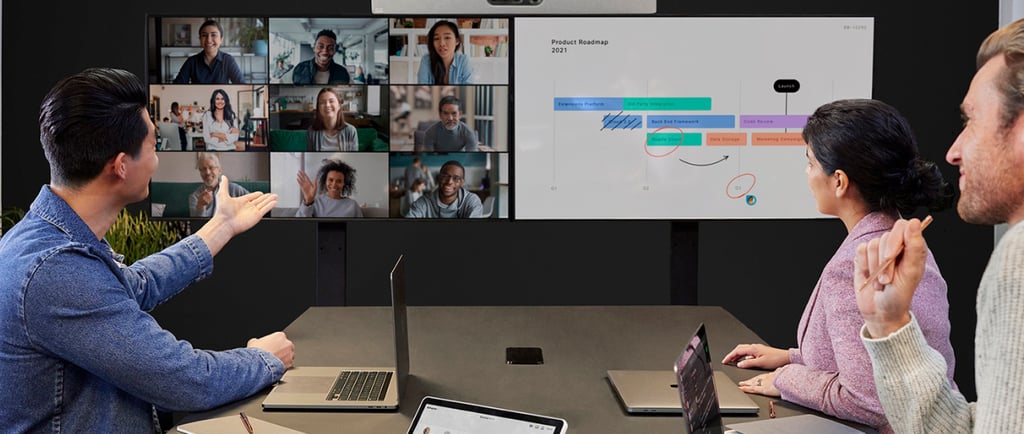Hybrid and Virtual Events: The New Norm for Expanding Brand Reach and Engagement
Strengths of hybrid and virtual events in today’s PR landscape, showing how they can create immersive experiences and foster greater audience engagement.
Alex Silveria
11/1/20243 min read


The pandemic may have catalyzed the rise of virtual events, but their popularity has continued post-pandemic as brands recognize the benefits of hybrid and virtual formats. Combining the best of both online and in-person experiences, hybrid events enable brands to reach a global audience while providing immersive, multi-channel interactions that keep attendees engaged. Here’s how hybrid and virtual events are transforming the PR landscape and why they’ve become essential tools for brands looking to make a lasting impact.
1. The Advantages of Virtual and Hybrid Events for PR
Hybrid events, which combine live, in-person elements with virtual accessibility, offer significant advantages for PR. Virtual attendees from around the world can now join events without the time and expense of travel, broadening a brand’s reach and maximizing event attendance. This accessibility not only enhances visibility but also boosts inclusivity, allowing brands to interact with a more diverse, global audience.
Hybrid events also allow PR teams to leverage data to understand attendee engagement better. Metrics like online attendance, participation in virtual Q&A sessions, and even time spent viewing content can provide valuable insights for shaping future campaigns. Tools like Zoom, Hopin, and Whova have made it possible for PR teams to reach large audiences and gather real-time feedback to refine their strategies.
2. Creating Immersive, Multi-Channel Interactions
One of the biggest challenges for virtual events is replicating the interactive experience of in-person gatherings. Hybrid events tackle this challenge by blending digital and physical experiences. PR teams can create virtual networking lounges, breakout sessions, and live polls to encourage attendee participation and engagement.
Some brands are using augmented reality (AR) and virtual reality (VR) to add depth to virtual experiences. For instance, a beauty brand might use VR to provide virtual “try-ons” of their products, while a tech company could use AR to offer virtual demonstrations of new software. By using interactive elements, brands can engage attendees in meaningful ways, transforming passive viewers into active participants.
3. Reaching New Demographics with Virtual Accessibility
The accessibility of virtual and hybrid events means brands can engage demographics that might not typically attend in-person events. Younger, digital-native audiences are particularly responsive to virtual events, with studies showing that Millennials and Gen Z are more likely to attend events online than older generations. This shift is significant for PR teams aiming to reach tech-savvy demographics, allowing brands to expand their presence and relevance with younger audiences.
For example, hybrid fashion shows have seen impressive global engagement by offering virtual front-row seats to audiences around the world. In 2022, major fashion brands offered interactive livestreams of their runway shows, allowing fans and media worldwide to experience new collections in real time. This strategy not only reached broader audiences but also strengthened brand loyalty by making exclusive events accessible.
4. Fostering Community and Building Lasting Connections
While hybrid events can’t fully replicate the in-person experience, they do offer unique ways to foster community. Virtual meetups, live Q&A sessions, and social media integrations help attendees connect and feel involved. Some platforms even offer personalized content based on attendee behavior, tailoring the experience to keep them engaged.
PR teams can use social media before, during, and after hybrid events to maintain the conversation, amplify key messages, and build excitement. Creating event-specific hashtags or online communities provides attendees with a place to share their experiences and connect with like-minded people. By extending the reach of the event into digital communities, brands can strengthen relationships and build lasting connections with their audience.
5. The Future of Hybrid and Virtual Events in PR
As hybrid and virtual events continue to evolve, we can expect even more innovation in how brands engage with their audiences. AI and machine learning will likely play a larger role in personalizing the attendee experience, while emerging technologies such as the metaverse may offer new frontiers for virtual interaction.
PR teams that embrace the potential of these formats and adapt their strategies will be well-positioned to create impactful, memorable events that resonate with today’s digital audience. In a world where flexibility and accessibility are key, hybrid and virtual events are not just a temporary solution—they are the future of PR.
Hybrid and virtual events have redefined the possibilities for brand engagement. By combining digital and physical experiences, brands can reach a broader audience, create interactive experiences, and foster lasting connections. As PR teams continue to leverage these formats, hybrid and virtual events will remain powerful tools for creating meaningful engagement and expanding a brand’s reach. The future of PR is here, and it’s hybrid.
